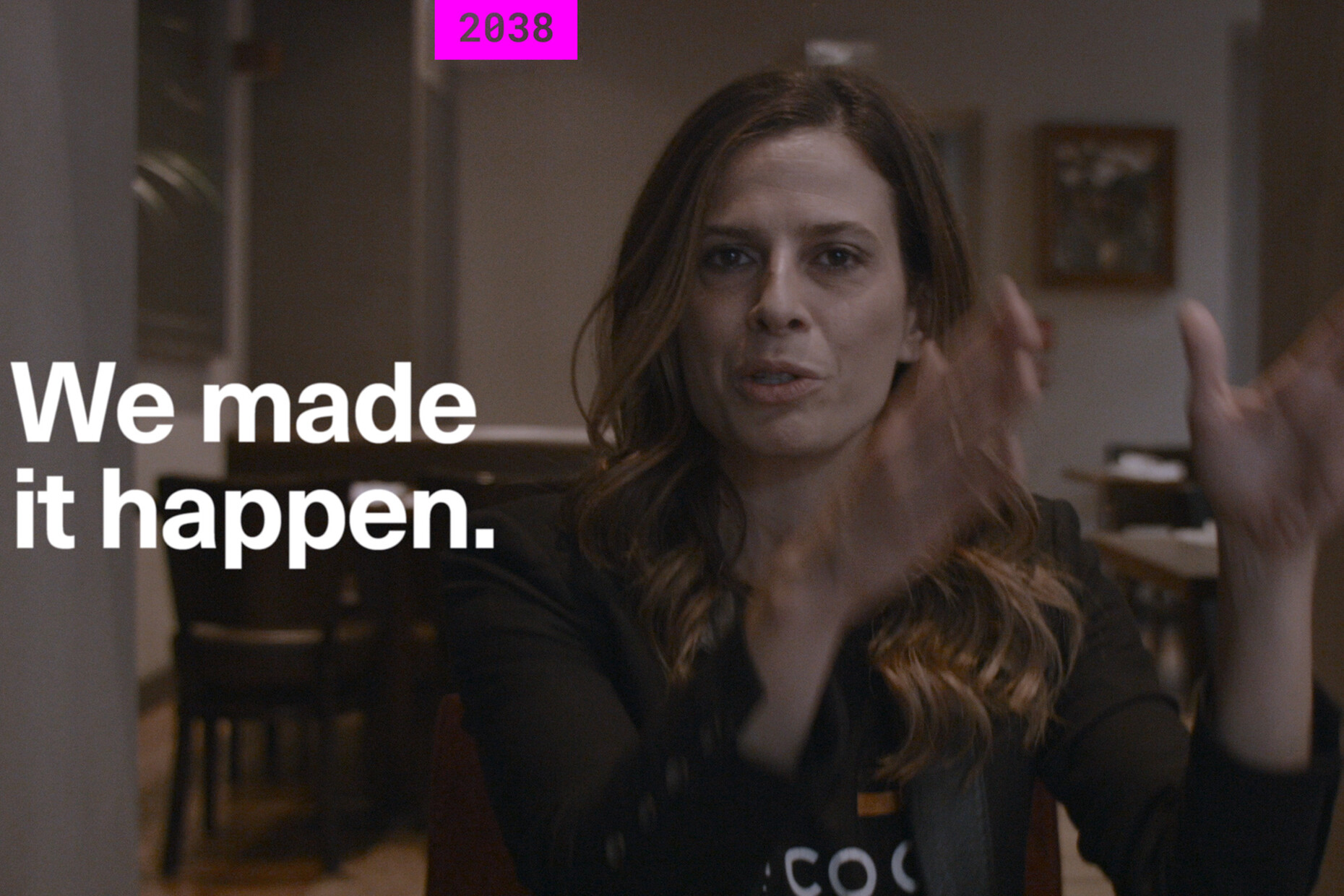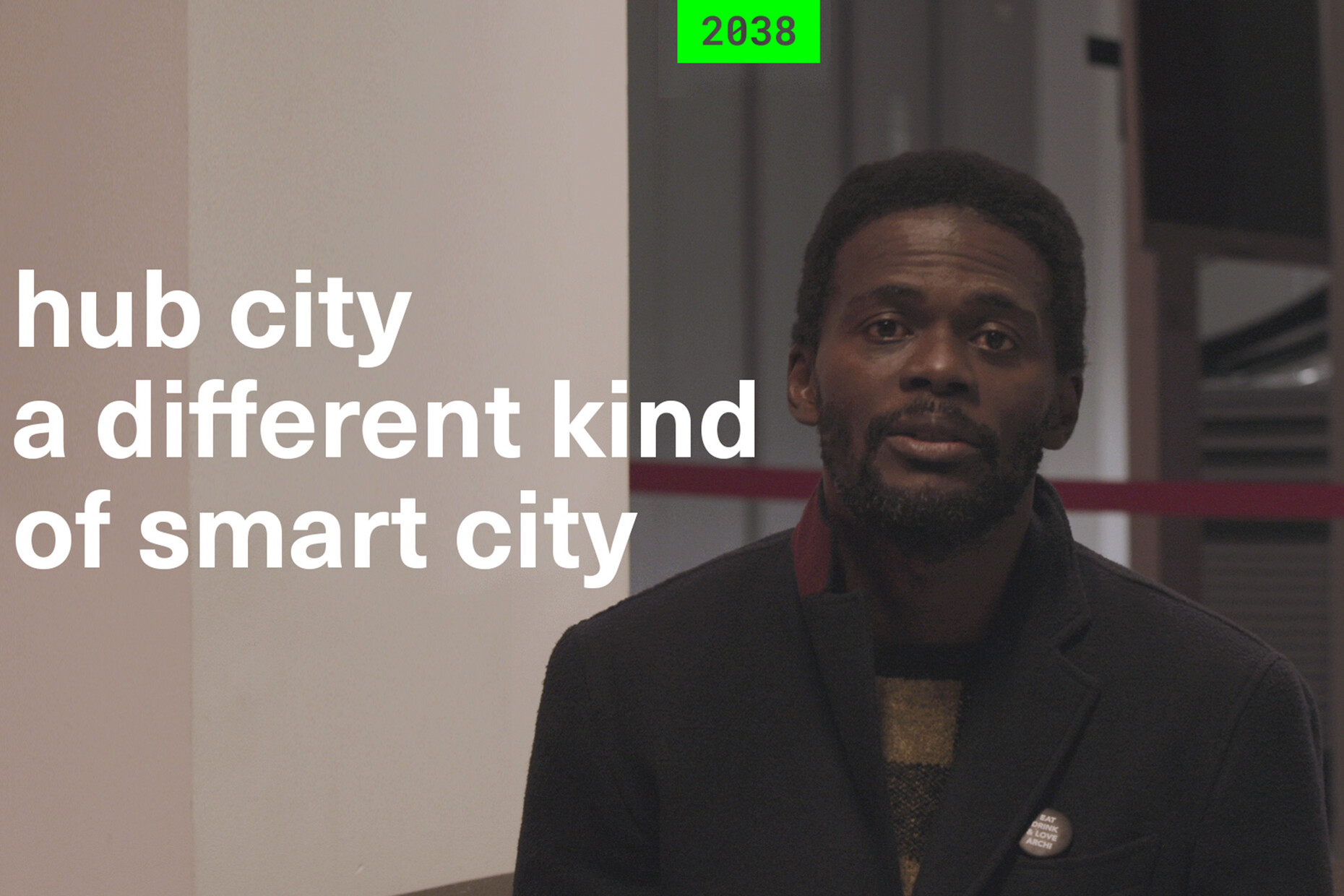BIENNALE ARCHITETTURA 2020
Tomorrow’s yesteryears
The collapse will come in 2023. At least according to those responsible for the German contribution to this year’s Architecture Biennial in Venice. The economic and social global crisis of 2023 is described in retrospect – and this also forms the central idea of the concept put forwards by the initiators Arno Brandlhuber, Olaf Grawert, Nikolaus Hirsch and Christopher Roth. A jury chaired by German Architecture Museum (DAM) director Peter Cachola Schmal unanimously selected the concept for realization.
The story of this global social meltdown and the subsequent path leading out of the crisis is reconstructed in mockumentary style through interviews with “contemporary witnesses”. Although all that was to be seen at the press presentation for the project was a barely 15-minute-long excerpt from the fictitious documentation, one could nevertheless infer what the general outline of the story was: The global economic crisis of 2023 shatters social cohesion and the belief in the existing political and economic order to the core. However, far-sighted decisions subsequently taken mean that new “radically democratic” forms of government and a new sense of solidarity and a cooperative economic system not primarily geared to profit maximization arise from the crisis.
The short interview segments already provide a series of key terms that in the narrative help overcome the collapse: Solidarity, cooperation, sustainability, participation and inclusion. A non-hierarchical Internet and a digital revolution that is not controlled by global corporations. Artificial intelligence and robotics that augment rather than replace humans. Architecture that creates public spaces, that is removed from the market’s logic of exploitation, and that rather than isolating itself from nature takes it into account.
All these ideas are already marshalled as answers to current issues. And the “contemporary witnesses” of the year 2038, who in the interviews describe the beneficial effects that these measures have brought forth, are precisely the same agents calling for the implementation of the suggestions today. These include for example Francesca Bria, who is driving the reorganization of Barcelona into a leading Smart City and her colleague Caroline Nevejan from Amsterdam. Or Internet researcher Evgeny Morozov, who is examining how authoritarian regimes make use of the Internet. Freeware programmer Audrey Tang, Kenyan IT expert Juliana Rotich and Internet pioneer Vint Cerf. The Biennale project team has recorded interviews with them and many others, in which they take a tongue-in-cheek and evidently joyful look back from an imaginary future.
The fictional future as encouragement for today
Incidentally, the curators certainly did not conceive their invented future scenario as being entertainment. Instead they hope to imbue their hypothetical future narrative with persuasive power by presenting it as “fact”. Visionary ideas are to be made credible. This approach is without question highly original. The realization of the biennial project is moreover construed as an object lesson in itself. The team sees itself as an open system that various groups and individual can “dock onto” temporarily in order to take on particular tasks. This includes for example the makers of street newspaper “Arts of the Working Class”, with their periodical standing in for the show catalogue. This intends to make the biennial project accessible to everyone: The newspaper is not only issued in Venice, but sold by homeless persons in various other cities, too. What’s more, the films that form part of the biennial contribution will be published online to coincide with the exhibition opening. The “2038” team is working with the Rebiennale organization, which re-uses remnants of past biennales in order to create the pavilion. The benches for the 2020 German pavilion are thus for instance crafted from remnants of the Korean pavilion at the 2019 art biennial.
While one might consider some aspects of the project somewhat utopian, they nevertheless constitute coherent realizations of the ideas that the curators want to discuss. However, the issue of concern may well lie elsewhere: So far, the makers have not yet entirely revealed which story of social upheaval they have come up with.
The images of street protests and police forces in full combat gear shown as part of the film during the press presentation of the project instantly conjure up the old leftwing narratives of revolutionary protest against a reactionary state authority. One can only hope that the curators are aware that both such outdated notions of a left/right division in politics and ideas of a revolutionary uprising are unfit to trigger positive social developments. This would discredit the reflections in the project that certainly are worth considering. The same would hold true for an outright rejection of the driving force the market plays: In order to master the enormous social tasks we face we will depend more than ever on incentive and reward systems.
Incidentally, it appears that at the current time wide sections of the population are downright enthusiastic when it comes to the new “super-value” that is sustainability. Large parts of the bourgeois mainstream back the “Fridays for Future” protests. A sustainable life style has long since become a mark of distinction for early adopters and thought leaders. Few larger corporations are not currently making huge efforts to operate more sustainably. Let’s hope that in real life we are able to skip the social and economic meltdown and straight away begin to evolve into an ecological, cooperative and inclusive society based on solidarity. And that in 2038 we are able to look back on today as serenely as the “contemporary witnesses” of the Biennale project.






